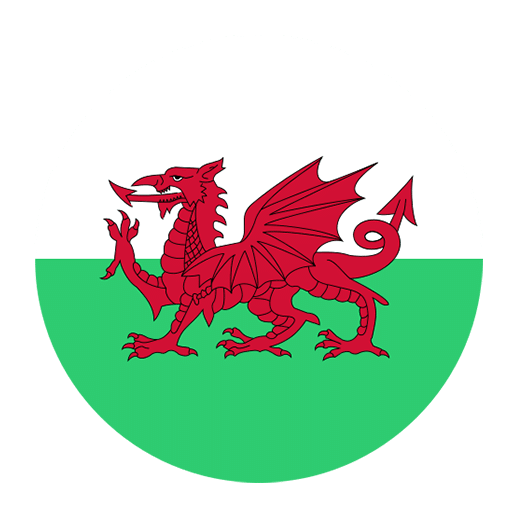When learning a new language, understanding the local monetary units and how prices are expressed can significantly enhance your cultural and practical knowledge. This is especially true for languages like Welsh, which is rich in history and cultural nuances. In this article, we will delve into the Welsh monetary units, common terms related to money and prices, and provide practical examples to help you navigate financial conversations in Wales.
The Welsh Pound: A Historical Perspective
The primary currency in Wales, as part of the United Kingdom, is the British Pound Sterling (£). However, the Welsh language has its own terms for monetary units which reflect its unique cultural heritage. The Welsh word for pound is “punt” (plural: “punnoedd”), and this term is still used in both written and spoken Welsh.
Historically, Wales, like the rest of the UK, used the pre-decimal system until 1971, where the pound was divided into 20 shillings, and each shilling into 12 pence. In Welsh, these were called “swllt” (shilling) and “ceiniog” (penny). Understanding these historical terms can be useful when delving into older Welsh literature or historical documents.
Modern Welsh Monetary Terms
In contemporary usage, the decimal system is standard, and the pound is divided into 100 pence. Here are some key terms you need to know:
– Punt (Pound): The basic unit of currency.
– Ceiniog (Penny): The smallest unit of currency, equivalent to 1/100 of a pound.
– Punnoedd (Pounds): The plural form of pound.
– Ceiniogau (Pence): The plural form of penny.
– Arian (Money): A general term for money.
– Pris (Price): Used to talk about the cost of something.
Expressing Prices in Welsh
When it comes to expressing prices, Welsh typically follows a format similar to English but with its own unique syntax and vocabulary. Here are some examples:
– £1.50: Un bunt a hanner (One pound and a half)
– £2.75: Dwy bunt a saith deg pump ceiniog (Two pounds and seventy-five pence)
– £5.99: Pum punt naw deg naw ceiniog (Five pounds and ninety-nine pence)
Note that in Welsh, the word “punt” changes depending on the number that precedes it. For example:
– £1: Un bunt
– £2: Dwy bunt
– £3: Tair punt
– £4: Pedair punt
– £5: Pum punt
This pattern continues with the appropriate Welsh number preceding the word for pound.
Common Financial Phrases
To make your Welsh learning journey smoother, here are some common financial phrases that you might encounter or use:
– Faint yw pris hwn? (How much is this?): Useful when shopping or inquiring about prices.
– Mae’n ddrud (It’s expensive): A handy phrase when negotiating or expressing your opinion about the cost.
– Mae’n rhad (It’s cheap): The opposite of expensive, useful for bargaining.
– Dw i eisiau talu (I want to pay): Essential for completing a purchase.
– Arian papur (Paper money): Refers to banknotes.
– Arian mân (Small change): Refers to coins or small denominations of money.
Learning Through Practice
The best way to get comfortable with these terms is through practice. Here are some practical exercises you can do to reinforce your learning:
Exercise 1: Price Conversion
Take a list of prices in English and try to convert them into Welsh. For example:
– £3.20: Tair punt dau ddeg ceiniog
– £7.45: Saith punt pedwar deg pump ceiniog
Exercise 2: Role-Playing
Engage in role-playing exercises where one person plays the role of a shopkeeper and the other a customer. Practice asking about prices, negotiating, and making payments entirely in Welsh.
Exercise 3: Listening and Repetition
Listen to Welsh audio resources like radio stations, podcasts, or videos where money and prices are discussed. Repeat the phrases and try to use them in your daily conversations.
Understanding the Cultural Context
While the technical aspects of currency are crucial, understanding the cultural context can make your language learning more meaningful and engaging. Wales has a rich cultural heritage, and its approach to money and commerce often reflects its values and traditions.
For instance, local markets, known as “marchnadoedd”, are an integral part of Welsh culture. These markets often feature local produce, crafts, and other goods, providing an excellent opportunity for language learners to practice their Welsh in a real-world context. Engaging with vendors in Welsh can give you a deeper appreciation for the language and its practical applications.
The Significance of Local Currencies
In some parts of Wales, local currencies have been introduced to support the local economy. For example, the “Bristol Pound” was a local currency used in nearby Bristol, and similar initiatives have been discussed in Welsh communities. While these local currencies are not widespread, they reflect a broader movement towards supporting local businesses and fostering a sense of community.
Conclusion
Understanding Welsh monetary units and prices is an essential skill for anyone looking to deepen their knowledge of the Welsh language and culture. By familiarizing yourself with key terms, practicing with real-world examples, and engaging with the cultural context, you can enhance both your linguistic abilities and your appreciation for Wales’ rich heritage.
Remember, language learning is a journey, and every step you take brings you closer to fluency and cultural immersion. Diolch yn fawr (Thank you very much) for embarking on this journey to understand Welsh monetary units and prices!

